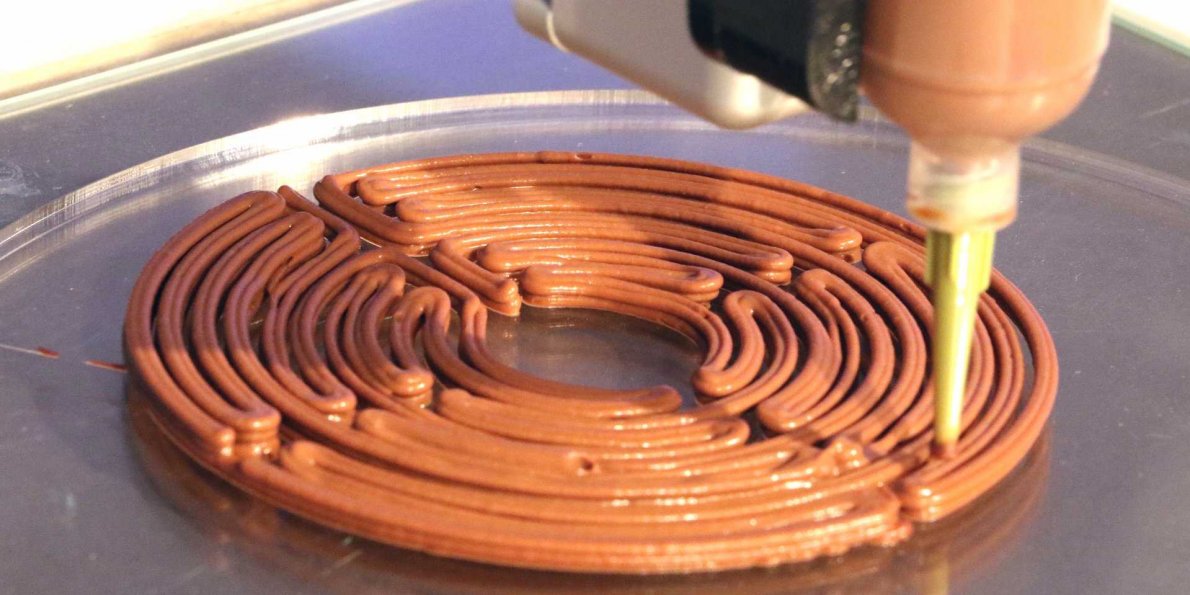This next story should be interesting to digest, and I mean that quite literally. Imagine if computer ink could taste like food. Well now it can because the 3D-printed food revolution has arrived, but you'll need a big budget, if you want to be part of it. A new pop-up eatery in London claims to be the world's first 3D-printing restaurant, serving a futuristic nine-course tasting menu for the price of 250 pounds or US$330.

World's first 3D-printing restaurant pops-up in London
At this speed it can hardly be described as fast food. But then again, this restaurant is aimed at much more discerning palettes.
In London's trendy Shoreditch district, what's claimed to be the world's first 3D-printing restaurant is swinging open its doors for a limited three nights, treating a lucky few to its slowly-constructed dishes.
It's called 'Food Ink' and it's not just the food that's 3D-printed, it's also the chairs, plates, cutlery -- even this rose vase.
Food Ink is the work of founders Antony Dobrzensky and Marcio Barradas who teamed up with Eindhoven-based 'byFlow' to use their food-capable, multi-material 3D printers.
"Food Ink is a place where you go and everything around you is live 3D-printed before your very eyes. The chair that we are sitting on right now, at this table, the knife, the fork, the spoon, the cups, the plates and even the food, over a multi-course, Michelin-calibre, high-level gastronomy experience, everything comes magically out of printers before your very eyes," said Antony Dobrzensky, founder of Food Ink.
Organisers say just seven minutes after opening the booking process, all thirty seats for the three-night pop-up sold out. Each evening they host just ten dinner guests.
For 250 British pounds (approx. $330 USD) guests are served a nine-course menu, mostly designed on a computer.
This desert, named 'London after Eight', includes letters printed with a passion fruit puree. It's finished with chocolate, mint and whipped cream.
To make this concept work, Food Ink took on chefs, a food designer and an engineer.
"We take the food - and it can be anything you want, as freshly prepared or locally-sourced as you want, as healthy as you'd like - and we make it into a paste or puree in a blender or even by hand, and then it goes in these cartridges and the printer moves very precisely, in the same you would squeeze a pastry bag to make icing on a cake. But instead of the human hand of a chef, the robotic hand of the 3D printer can guide the cartridge very precisely," said Antony Dobrzensky.
Using 3D-printing, chefs can combine various ingredients in tiny different layers - a difficult challenge for even the most steady-handed chef.
"Well, the truth is that we can improve a lot with the 3D-printing, because doing it by hand would be impossible to realise the creations that can be made with the 3D printer. Here we have seen for example with the deserts, sweets, savouries, for a labyrinth, that is made with geometric shapes which are impossible to do by hand," said culinary advisor and chef Mateu Blanch.
But what does it actually taste like?
"You look at 3D-printing and you think; 'Okay, it's fake or artificial', but no, the taste is like the real food, the guacamole taste like guacamole, the tomato also. All those combinations, it's not artificial for me."
In the coming months, Food Ink plans to go on a world tour, visiting twenty cities, including, Berlin, Dubai, Seoul, Rome, New York and Las Vegas. Organisers hope to eventually open a permanent restaurant, although they're undecided in which country.















